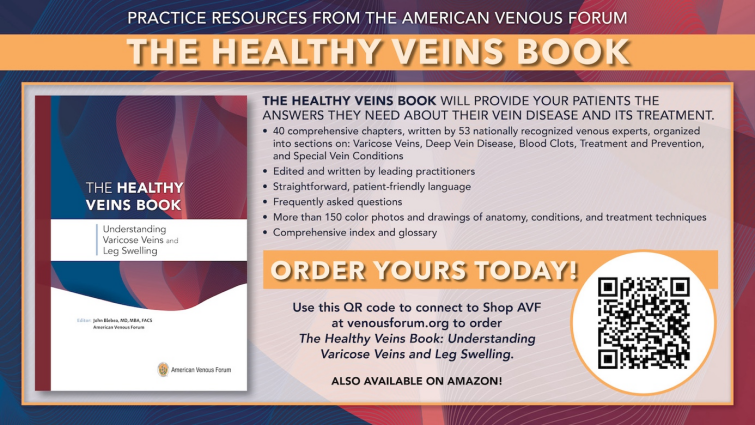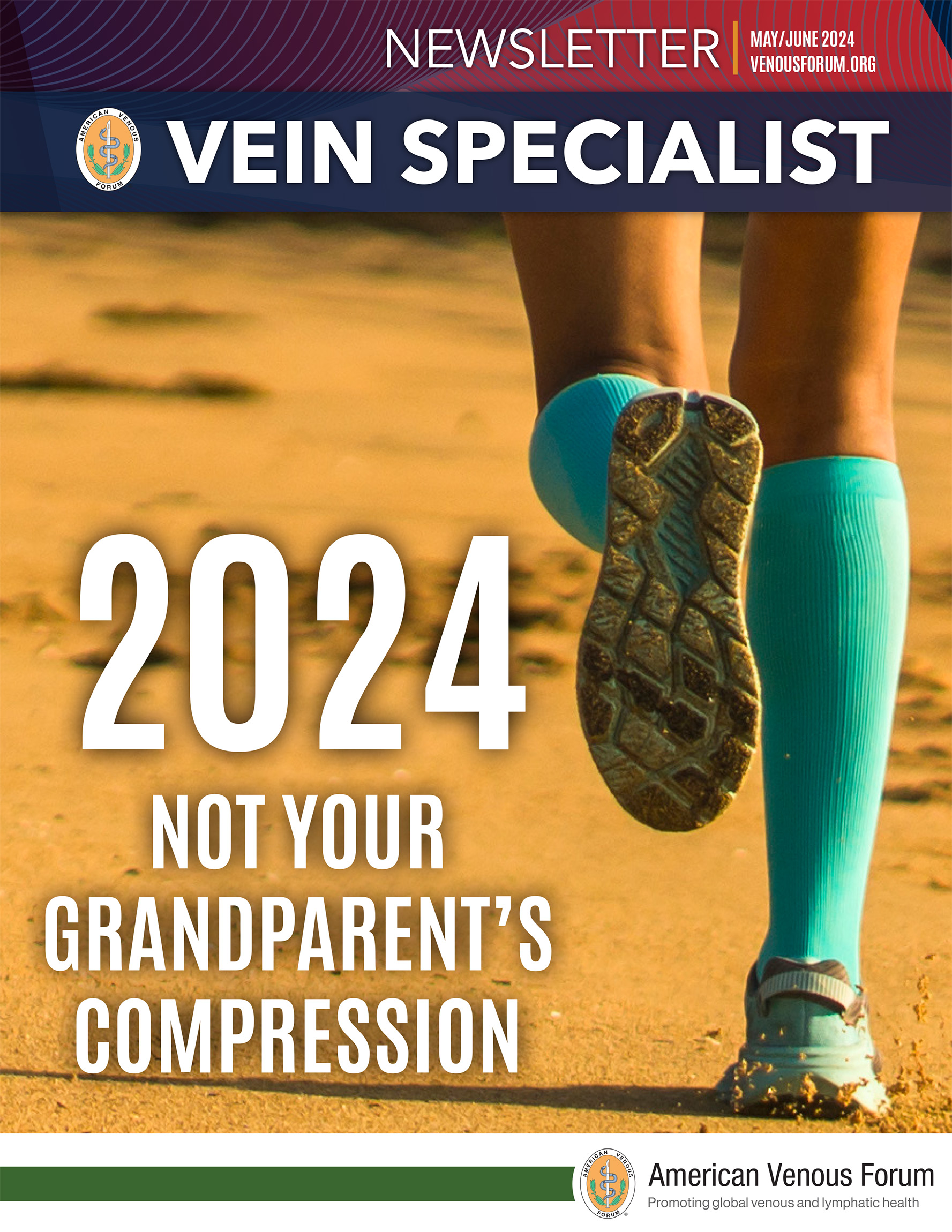
May/June Issue of Vein Specialist
Empowering Patients, Clinicians, and Suppliers:
USMCA Supporting the Lymphedema Treatment Act

Carmen Anderson
Reimbursement & Market Access Consultant for USMCA
In a monumental step toward improved care for patients with lymphedema, the Lymphedema Treatment Act has ushered in a new era for Medicare beneficiaries, granting them eligibility for lymphedema compression treatment items starting January 1, 2024. Nearing the halfway point of the first year of implementation, the United States Medical Compression Alliance (USMCA), composed of Jobst, Juzo, Lohmann & Rauscher, medi, and Sigvaris, wants to continue to promote understanding of the nuanced landscape.
While Medicare beneficiaries with a lymphedema diagnosis are now eligible to receive compression bandages and garments for day and nighttime use, the Durable Medical Equipment Medicare Administrative Contractors (DME MACs) are still navigating the intricacies of day-to-day application. This includes updating systems with the new HCPCS codes and fee schedules to process claim submissions, in addition to making coverage decisions on a claim-by-claim basis since there is not a specific National or Local Coverage Determination in place. Medicare Advantage providers are also working through the updates, and private payers are choosing what components to adopt as well.
Regardless of the operational changes required to move forward, one of the critical aspects for patients and providers to obtain successful coverage is medical record documentation. This will serve as the cornerstone in justifying the prescription and provision of lymphedema compression treatment items. Detailed documentation is crucial to capture the ICD-10 code (I89.0, Q82.0, I97.2, or I97.89), the necessity of compression based on symptoms, severity, and persistence, as well as the anatomical location(s) to be treated and what type of compression is required. Both CMS and the DME MACs have specified the benefit is limited to the treatment of lymphedema (ie, existing ICD-10 codes), and does not include the same items when used to treat injuries or other illnesses (eg, phlebolymphedema, lipedema).
For example, documentation should elucidate why a patient requires day and nighttime compression whether it’s for the lower extremity, upper extremity, chest, trunk, or head and neck. Additionally, it should specify if the patient needs standard or custom, and what type whether it’s adjustable wraps, gradient compression garments, nighttime products, and any medically necessary accessories (eg, zipper, donning and doffing aid). The more precise and comprehensive the documentation, the stronger the case for submission of a claim.
Unique, patient-specific documentation supports the initial payment, but also protects the claim during future reviews. In the event of a denial by a Durable Medical Equipment Medicare Administrative Contractor (DME MAC), an audit from the Recovery Audit Contractor (RAC) or Unified Program Integrity Contractor (UPIC), or other health insurer audit, thorough documentation serves as a foundation to ensuring claims are upheld and reimbursed appropriately. It’s a proactive measure to streamline administrative processes and safeguard patient access.
Key Documentation Points
- ICD-10 Code
- Anatomical Locations
- Standard or Custom
- Compression Type
- Day and Nighttime Need
- Symptoms, Severity, & Persistence
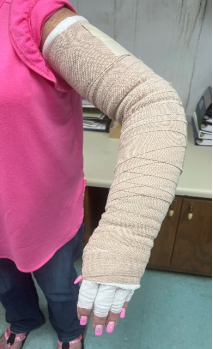
Multilayer Bandages
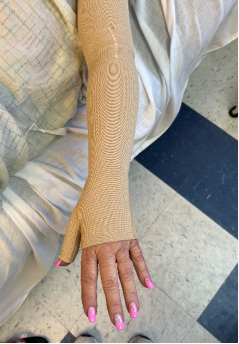
Daytime Flat Knit
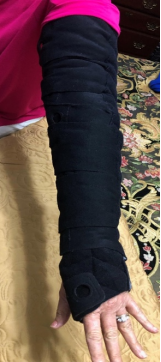
Nighttime Garment
The USMCA continues to encourage open dialogue among the industry, clinicians, patients, and suppliers to support successful implementation of the Lymphedema Treatment Act. If you or your patients have received a denial of coverage for their bandages or day or nighttime products, we encourage you to report it on the Lymphedema Advocacy Group (LAG) denial reporting form.

ElastiMed’s Wearable Device Will Knock Your Socks Off

Omer Zelka
Founder & CEO, ElastiMed
ElastiMed’s innovative wearable medical device is designed to treat and manage lymphatic and venous diseases.
The device is a sleeve, embedded with a proprietary material technology called EAP (Electroactive Polymer), to autonomously massage the patient’s limb throughout the day. The device applies an effective clinical treatment similar to an IPC (Intermittent Pneumatic Compression), in a battery operated, quiet, low-profile device, that enables full mobility during treatment.
In addition, the device will also monitor the patient’s condition, alerting in case of a decline, and allowing proper management of the disease.

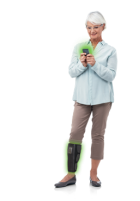
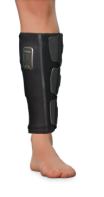
About Lymphedema
Approximately 20 million Americans suffer from lymphedema, a progressive, chronic condition where the accumulation of protein-rich fluid causes painful swelling in the legs, arms or other body parts. Managing lymphedema typically requires lifelong care and various levels of therapy to control the pain and swelling. Lymphedema is caused from a variety of factors, including CVI (Chronic Venous Insufficiency), cancer, infection, trauma and surgery.
About ElastiMed
ElastiMed designs cutting-edge solutions empowering patients and healthcare providers alike. ElastiMed is dedicated to improving patients’ outcomes, addressing health equity challenges and enhancing healthcare delivery at home.
ElastiMed’s device applies an effective non-pneumatic treatment, in an easy-to-wear and discreet device, allowing patients to maintain an active lifestyle during treatment.
Currently undergoing clinical testing for leg volume reduction, ElastiMed’s device have demonstrated promising results. These findings underscore the potential of this technology to significantly improve patient outcomes and enhance healthcare delivery.
With its innovative approach and patient-focused design, ElastiMed is reshaping the landscape of healthcare delivery, promising a brighter future for patients grappling with lymphatic and venous diseases.

Featured Article:
5 Traits CEO and Astronauts (Yes, Astronauts) Share
Korn Ferry Institute
As NASA begins the recruiting process for its next class of astronauts, our experts compare the “right stuff” needed in both outer space and the C-suite.
Associate’s Corner

Lorrain Loretz, DPM, NP
Chair, AVF Associate Member Committee
Welcome to the Vein Specialist Associate’s Corner! As you may know, our Allied Health Membership group was renamed “Associate Membership” at the annual AVF board meeting in March 2024. This name change reflects the addition of nurse practitioners and physician associates/assistants (collectively called advanced practice providers – APPs), and registered nurses to our group of allied health professionals (technologists, therapists, and others). This column will keep you informed of the AVF activities of associate members.
We enjoyed a full day of focused education at VENOUS24, the APP+ Sessions on March 3, 2024. The sessions generated new interest in developing more programs and benefits for associate members. Six members volunteered to form the associate member sub-committee of the AVF Membership committee, with a primary goal of attracting and retaining more associate members. AVF is proud to introduce our associate member team:

Lorraine Loretz, NP

Tara McSweeney, NP

Kristan Probeck, NP

Richard Kennedy, PA

Debbie Williams, RN

Bianca Cutler, NP
The sub-committee meets monthly and has already had two meetings. Here’s some info for you:
- Of the 42 Associate members; 60% are new members for 2024
- 70 non-physician registered attendees were at the APP+ sessions at VENOUS24
- Goals this year are:
- Expansion of program offerings for associate members at VENOUS25
- Addition of a Journal Club meeting with APP-focused articles
- Opportunities for associate members to participate in research and writing groups
- Development of an APP intensive course to facilitate entry to venous practice
Our team will be hard at work this year developing these ideas and more. Come join us; all are welcome! Contact Lorraine at [email protected].

